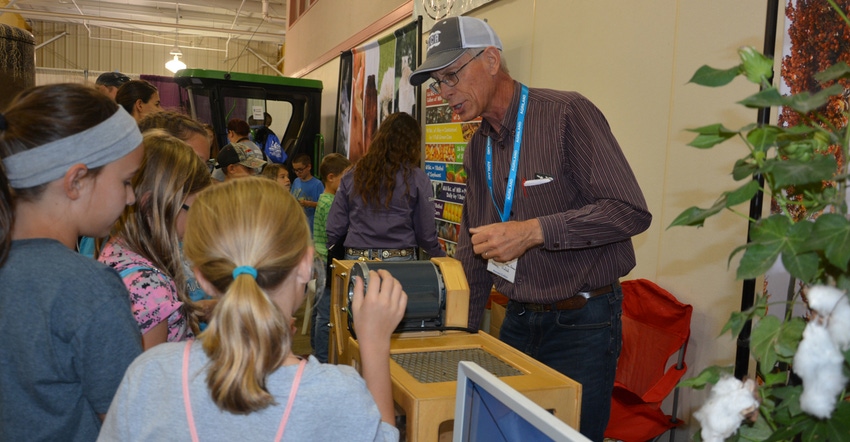
The heat of the first half of September after a cooler-than-average summer was good news for Kansas cotton farmers, who have seen the crop move toward the promise of maturity before freeze — provided of course, that freeze doesn’t arrive before the normal harvest start of mid-October.
“We’ve seen some catching up as we got heat,” said Rex Friesen, crop consultant for the Southern Kansas Cotton Growers, which operates gins at Winfield and Anthony. “Much of what I’ve seen in the fields is looking quite decent. There are some fields that have been challenged and are looking so good, but in general, I think we’ll see between 750 and to over 1,000 pounds.
Like all fall crops, planting was challenging for cotton growers this year, with May — the ideal planting month — seeing rain on 26 of its 31 days and setting a record for the wettest month in Kansas since record keeping began.
That means less acres were planted that than USDA estimates, based on planting intentions, which would have put the crop at about 170,000 acres in Kansas.
“I think we’ll see more like 100,000 harvested,” Friesen said. “That’s still a big increase from just a few years ago. Right now, we just September to stay warm and maybe a delayed frost.”
The rapid buildup in acres has created some challenges for the state’s four gins at Winfield, Anthony, Cullison and Moscow, which have had to remodel and expand rapidly to keep up with growth of acres and bales. But it has also increased interest in the crop that is still somewhat rare in much of state. And it has increased interest in how the crop is harvested and ginned.
That interest led Friesen to the Kansas State Fair with a model cotton gin that he set up in Agriland to demonstrate just how a gin works.
Agriland normally draws most kids — many on the younger side — to ride pretend horses, attempt to milk Blossom the cow (squeeze, don’t pull) and stick their hands into tubs of wheat, milo, corn and soybeans. The model gin was captivating the parents as well as the kids, and Friesen was handing out baggies containing a half-dozen seeds and securing promises to try their hand and growing a little cotton in their yard at home.
“We’ve got some people as far north as Lyons planting cotton now and we think a lot of our varieties can be planted further north than that,” he told a visitor who said she lives in Ellsworth County but would like to see it the plants were grow there.
On Sept. 16, Ag Innovation Day at the fair, Friesen left his gin demonstration post and joined the lineup of educational speakers at the Pride of Kansas stage.
The audience grew as he began showing videos of cotton being harvested and ginned and explained the growth of the crop in Kansas. He said that Kansas cotton is gaining notice for high quality and used mostly in the production of denim.
Friesen said cotton acres have grown because farmers have been able to get better returns on cotton than on the more typical commodity crops because of the long downturn in commodity prices.
“Right now, the future looks bright for cotton in Kansas,” he said.
About the Author(s)
You May Also Like






